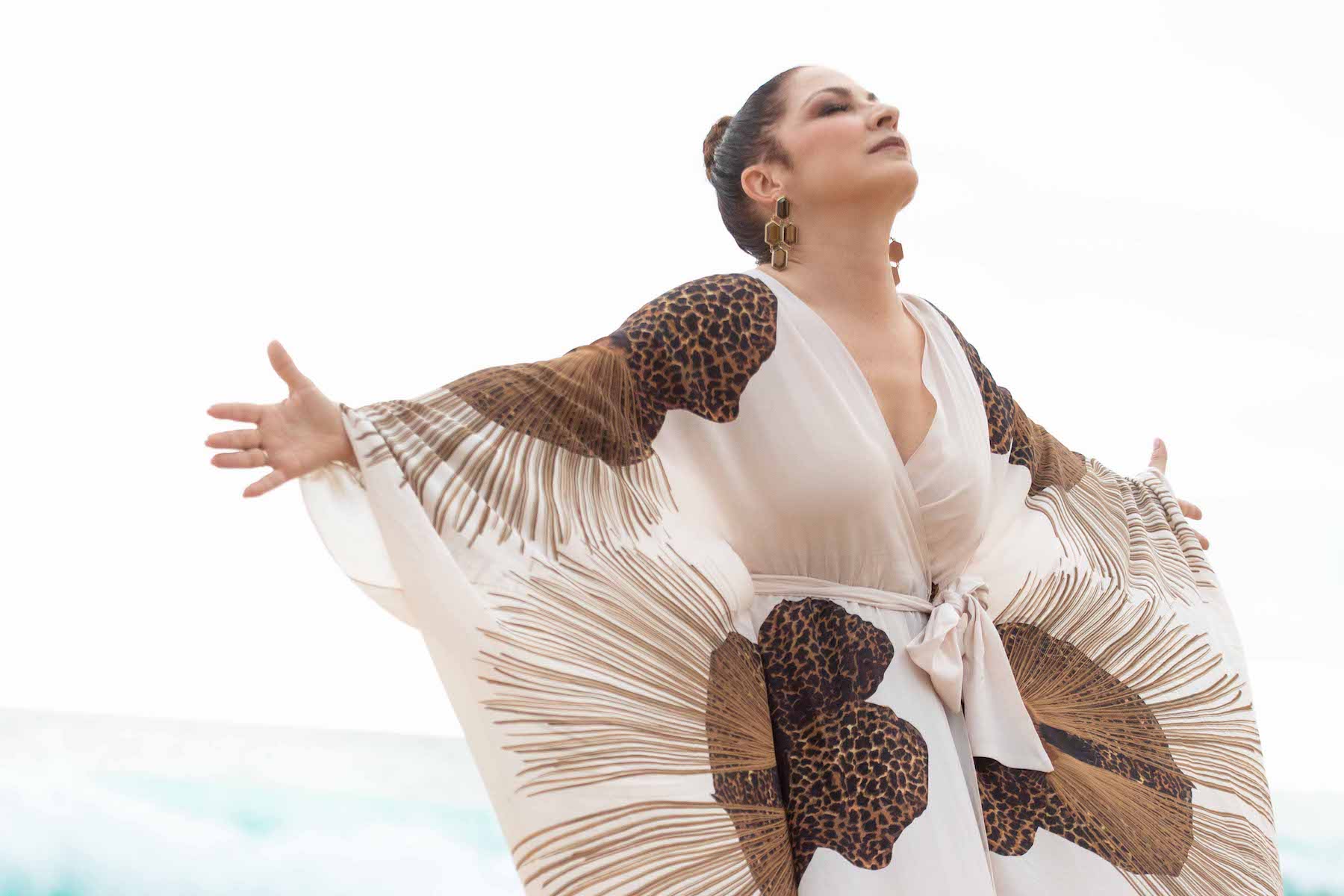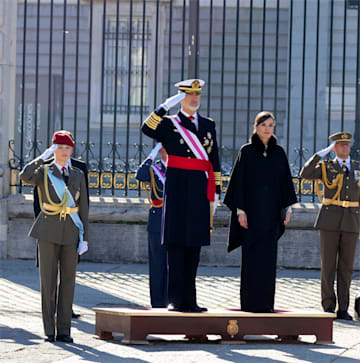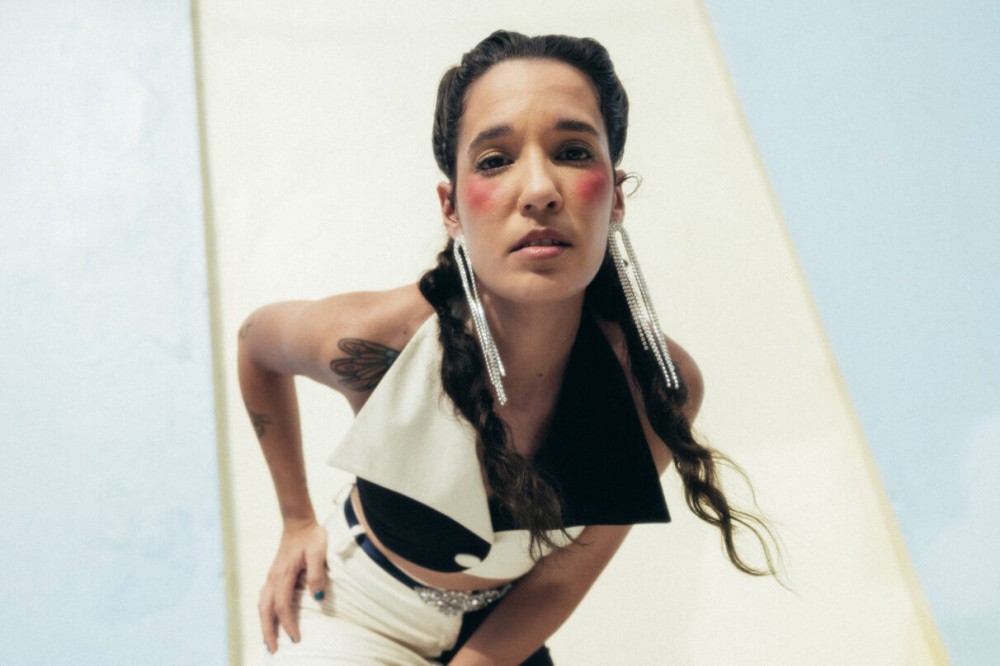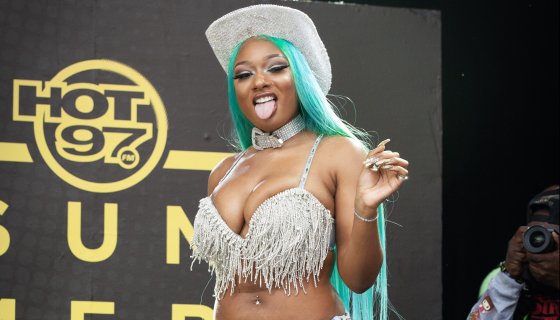
Gloria Estefan on New Album ‘Brazil305,’ Seeking Joy in Quarantine
Gloria Estefan didn’t enter the music business to become a superhero. Nor did she anticipate becoming a patron saint for Cuban-Americans, nor a musical ambassador to Brazil. But three Grammys, 14 studio albums, and a Presidential Medal of Freedom later, she’s come to embrace all three roles after stumbling upon them.
Like most Florida residents, Estefan has been locked down in isolation during the Covid-19 pandemic. She’s passed the time by cleaning out her closets at home in Miami’s elite celebrity enclave, Star Island, where she resides with her husband and Miami Sound Machine bandleader, Emilio Estefan; her hangouts with her crew of childhood friends, nicknamed the “Dirty Dozen,” have been limited to some boisterous Zoom calls. One of those friends happens to be Dr. Aileen M. Marty, an infectious disease specialist, who urged Estefan to encourage her fans to wear protective gear during the pandemic. Estefan complied by recording “Put On Your Mask!” (sung to the melody of her 1989 megahit, “Get On Your Feet”), complete with an accompanying (anti-)viral video, in which she plays a doctor, a cowgirl, and Superwoman, spreading a message of caution in the time of Covid-19.
“I said, ‘Forget it. The universe is enlisting me here,’” Estefan says on a call from her home office, where she’s flanked by books and vintage family photos from her childhood in Cuba and Miami.
On Thursday Estefan released her first album in seven years, titled Brazil305 — an effervescent collection of songs revamped and recorded with the help of Bahia’s finest samba musicians, and arranged by the great percussionist Laércio Da Costa. Estefan lends a little Cuban tumbao to Brazilian classics like “Magalenha,” which she recorded with the legendary original vocalist Carlinhos Brown, and gives her own songs, like “Conga” and “Cuts Both Ways,” a samba zhuzh. Estefan will follow up Brazil305 later this year with a documentary, Sangre Yoruba, in which she explores the African lineage that binds together the musical traditions of Brazil and her native Cuba. Both the album and documentary were originally slated for release in 2017, but postponed after Estefan’s mother, Gloria Fajardo, passed at the age of 88. “She was the real diva of the family,” Estefan says.
In our latest interview, Estefan speaks about seeking joy in the times of Covid-19, being the first Latina to headline a Super Bowl Halftime Show nearly 30 years ago, and some of the classic Brazilian sounds that sparked Brazil305. “When I picked the title Brazil305, it was supposed to be a bridge,” she explains. “Three-oh-five is the area code for Miami. But then I found out later that there are exactly 305 indigenous ethnicities in Brazil. It was like kismet. Things tend to happen when they’re meant to be.”
How is your time in quarantine going?
I just miss hugging my kids and my grandson and getting together without fear. But it’s been fruitful. I cleaned out my attic, which I had been meaning to do forever. Then I wrote a parody to “Get On Your Feet” called “Put On Your Mask.” It was requested specifically by my friend, Dr. Aileen M. Marty, who’s an amazing infectious disease doctor, very respected in her field. She said, “I’ve been telling the government that we need a national mandate for everyone to wear masks, but nobody’s paying attention to it.” This was at the end of March. And she knows I write parodies. So she asked me to come up with something about masks. I said, “Forget it. The universe is enlisting me here.”
Let’s talk about your new album, Brazil305. What first made you gravitate towards sounds from Brazil?
I think you’d be hard pressed to find a musician that does not like Brazilian music — its complexities, its syncopation. It’s lush and sensual and beautiful and live. I’ve loved Brazilian music since I was a kid. I mean, my mom was a triple threat — she could sing, she could dance, and she had this record collection. Obviously, it had the Cuban greats like Cachao, Celia Cruz, Javier Solis from Mexico. Nat King Cole. Andy Williams, Dean Martin. Then Stan Getz and [Antônio Carlos] Jobim, who in the early Sixties, with Sergio Mendes, created this wave of [Brazilian] music that took the world by storm.
The African influence on Cuban music is in Brazilian music as well, like the samba. When I joined the [Miami Sound Machine] at 17, I asked Emilio [Estefan] and the musicians learn to learn Brazilian songs, then I would sing them in Portuguese. I didn’t know what I was singing, but I’ve always loved languages! On our first album in 1976, we put a song called “Malvina” on it, which was a Brazilian hit. Then in 1983, we did a whole album called Rio where we covered Brazilian songs, then wrote the lyrics in Spanish. “Baila Conmigo (Lança Perfume)” was a huge hit for us all over Latin America, as were several of the songs. So when [Sony Music Latin executive] Afo Verde asked me what I thought about [revisiting] my songs, to go to Brazil and record them with Brazilian musicians and arrangers? I was all over it. Getting back in the studio to record vocals on tracks that I had done decades before was a very exciting prospect, but I wanted to do some original tunes, too, for the fans.
You’ve mentioned that the record was delayed by a few years. Why release it now?
It was supposed to come out in 2017. But my mom got ill, suddenly, and passed away after 33 days. I couldn’t sing. Every time I tried to step back into the studio, I just was so sad, and I didn’t want that on the record. It took over a year before I could go back in and do it, and it turned out really joyous. My mom was with me, through it all. But then, the record got delayed from Covid-19. Then with the George Floyd situation, I [delayed it again] out of respect. But I want to put some joy out into the world, to balance all this negativity we’re going through. This album found its moment.
As you know, Latin artists are surging in the American pop mainstream, more than ever before. What do you make of today’s Latin pop landscape, compared to what you saw when you started with the Miami Sound Machine back in the Seventies?
Music happens in waves. It belongs to young people that are creating new sounds, and really the only way to create new sounds is to fuse stuff together. When I was young, there weren’t a lot of women in that landscape; there was Carole King and Carly Simon, but it was very male-centric. In fact, Emilio asked me to join the band because he thought it would be cool to have a woman fronting, because there were no bands with female lead singers in Miami. When we were trying to break through, [record executives] told us that we should eliminate the percussion and the horns — to try to sound like what was happening on radio. We stuck to our guns and said, “Listen, this is who we are. If we’re going to be successful, we want it to be with our sound, with who we are.” I love to see young artists like Rosalía using their roots and taking them to a different level. Look, I don’t like a lot of the messages in Bad Bunny songs, but I loved “Yo Perreo Sola.” I thought that was a killer track. Music is fascinating for me, and I continue to always try to learn from it.
Your career served as the blueprint for so many Latino artists in the States today, especially Cubans.
When I was a kid, I used to watch I Love Lucy with my mouth open — like watching Desi Arnaz singing “Babalú” on the most American TV show, and speaking in Spanish. I saw an opening in that show. Then later on with Santana and José Feliciano, who didn’t change who [they were]. There was some controversy when Feliciano got invited to play the National Anthem, and he just changed it up a little bit. But he opened the door, and hopefully we pushed it open a little further, with what we did in the Eighties and Nineties. When I released [1993 album] Mi Tierra, I thought, “I need to put this out [while] people are listening.” We wanted to promote our culture and our language and the music of our native Cuba. I was only two when I came to the States — and my mom latched on to those cultural roots, thinking we’d be going back, and how important it was. But when we saw we weren’t going back to Cuba, it was even more important to keep that alive.
This year, Jennifer Lopez and Shakira put on a Latina-fied Super Bowl Halftime Show in Miami. But you were, in fact, the first Latina to ever headline the Halftime Show — in 1992! What was that like?
It was really cold in Minneapolis. Oh, my God. It was like, 60 below zero outside. Emilio tried to take a walk outside and his lungs almost froze. But let me tell you, I love football. I remember I was 15, when the Dolphins had that undefeated season. I would lay on the roof of my car and hear all the horns and fireworks exploding all over. The Super Bowl is the top show in American sports, and to be invited to do that show was a big honor. And I got to do it twice — that time in Minneapolis, then in Miami with Stevie Wonder in 1999. So I’ve gotten to do two Super Bowls and three Olympics!
How did you feel about this year’s halftime show?
Those things are nerve-wracking, because if you screw up, you’re going to screw up in front of billions of people. And representing a culture, that can become a daunting thing. So I was super, super proud of what J. Lo and Shakira did there. People kept asking why I wasn’t in on it. But quite honestly, if you got Shaki and J. Lo? You don’t need anybody else. Everybody has their moment, and they killed it. They really did.
Your daughter Emily has pursued music as well — she doesn’t quite follow in your footsteps, but she marches to the beat of her own drum, literally, as a percussionist. What’s it like raising a young musician as a super-accomplished pop star?
I am my daughter’s biggest fan! As a baby, she would put together a drum set out of trash cans, and this and that. She was in my belly when I recorded the video for “Turn the Beat Around” — and she literally kicked the mic stand. I should’ve known she was gonna be a drummer. To me, a female drummer is the most exciting thing ever. She has it naturally, but when she was 18, she went to the Berklee College of Music, which is what helped make her a much better musician. I wish on a good day I could do what this girl does.



